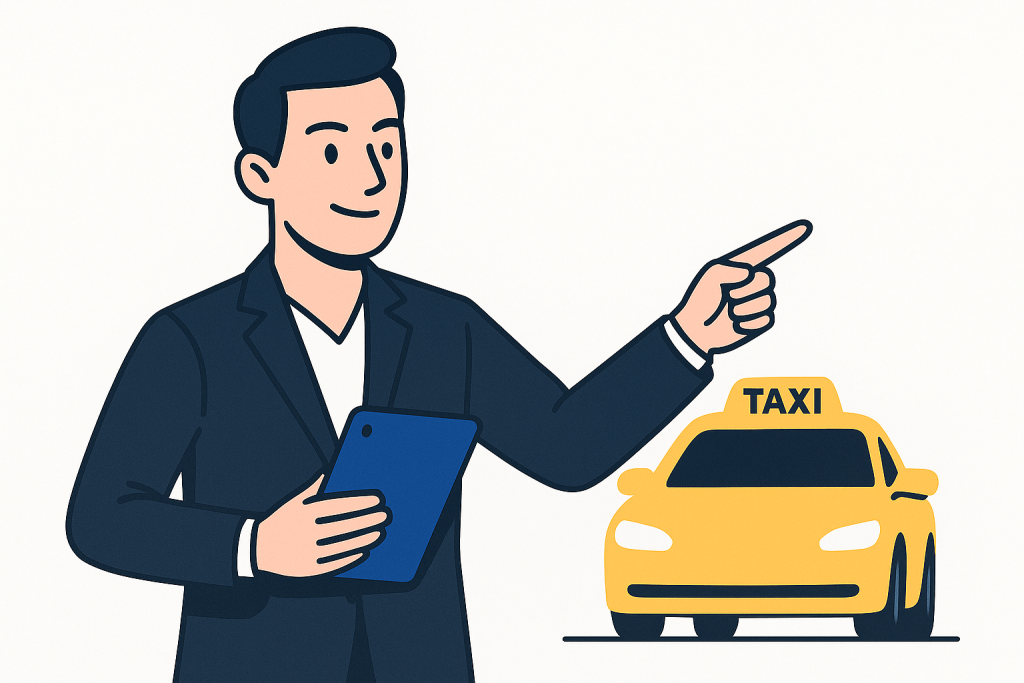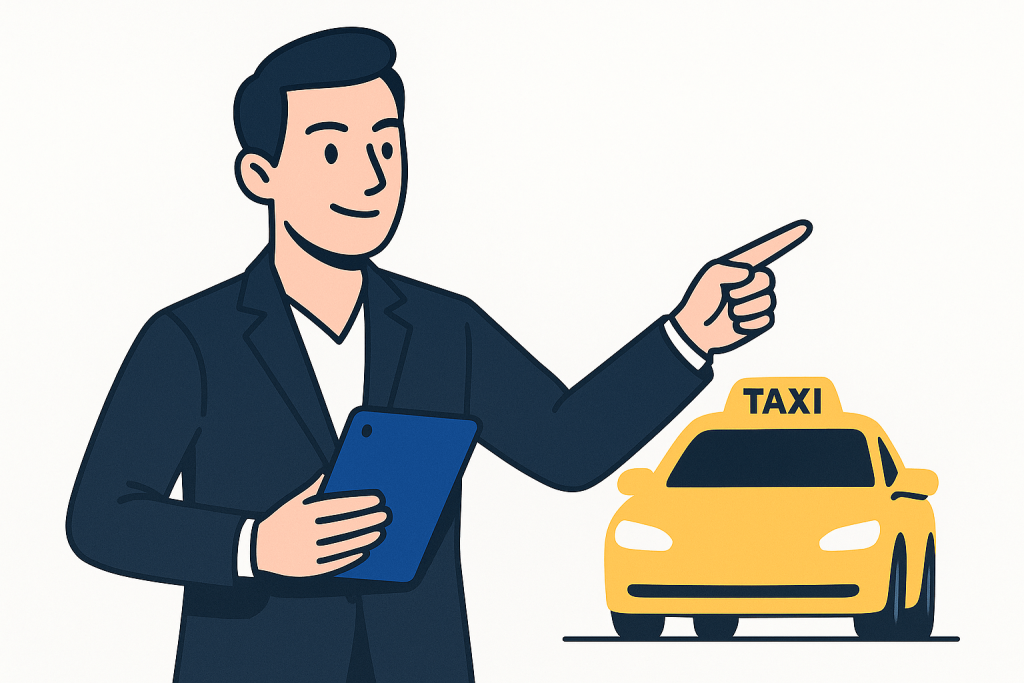Would you like to find out what you can automate your taxi business to start earning more this season? Most taxi business owners know that preparation for the season is not just a technical process. It is a chance to restructure operations, eliminate bottlenecks, and lay the foundation for growth.
Today, we’ll walk you through a practical checklist with real-world examples from our fictional character, Peter, the owner of a small taxi company in Belgium.
By following this checklist, you will understand:
- Which processes should be automated first,
- Why it’s critical for your profits,
- How to avoid common mistakes that many companies make before the season kicks off.
Get ready to prepare your business for a season of growth and success!
Checklist: What to Implement Before the Season
1. Automate Order Intake
Why it matters: In 2025, more than 70% of customers expect to book a taxi online quickly and without calling. If booking takes more than 3 minutes, up to 50% of users leave for competitor websites. A fast and intuitive booking system is crucial to maximize orders.
Action Steps:
- Install a quick booking widget on your website.
- Ensure customers can calculate the ride cost, choose their route, and confirm the booking within 2–3 minutes.
- Optionally, offer a mobile app for frequent customers.

Peter’s Example:
Peter’s site was a simple one-pager with a phone number. Orders were only accepted by calls, and he often missed them. After installing an online booking widget, customers could book without waiting. Within a month, orders increased by 38%.
2. Smart Order Distribution
Why it matters: Manual order distribution delays service and increases errors. Companies that automate dispatch cut vehicle arrival times by 25–30% and reduce cancellations by 15–20%.
Action Steps:
- Implement a dispatch system that assigns rides based on driver location.
- Set priority rules (e.g., nearest driver or longest idle driver).
- Use push notifications for instant driver updates.

Peter’s Example:
Previously, Peter manually called drivers to assign orders, leading to delays and confusion. Sometimes he forgot which driver got which ride. After automation, orders were instantly assigned to the nearest driver. Vehicle arrival times dropped by 27%, and cancellations decreased by 18%.
3. Driver Management via Platform
Why it matters: Clear and fast communication with drivers boosts operational efficiency. Companies moving from Excel sheets to dedicated driver apps improve order handling speed by 20–25%.
Action Steps:
- Provide drivers with an app for receiving and completing orders.
- Automate order completion tracking.
- Set up visible bonus programs inside the app.

Peter’s Example:
Peter’s drivers logged their rides manually in Excel, causing frequent errors. After switching to a driver platform, each driver received orders via the app and tracked their bonuses, reducing mistakes and increasing driver activity by 22%.
4. Real-Time Vehicle Monitoring
Why it matters: Real-time tracking optimizes routes and minimizes idle time. Companies using GPS monitoring cut fuel costs by 10–15% and improve driver utilization.
Action Steps:
- Install GPS trackers on all vehicles.
- Analyze real-time data to identify inefficiencies.
- Regularly adjust deployment based on analytics.

Peter’s Example:
Without GPS, Peter had to rely on driver updates, leading to missed opportunities. After installing trackers, he found that two cars often idled during peak hours. Adjusting schedules boosted fleet utilization by 15%.
5. Financial Control and Reporting
Why it matters: Accurate payments build driver trust and loyalty. Automation reduces calculation errors and cuts administrative time by up to 80%.
Action Steps:
- Set up automated driver payment calculations.
- Automate generation of financial reports.
- Provide drivers with access to personal earning stats via an app.

Peter’s Example:
Peter used to manually reconcile weekly reports, taking hours and causing mistakes. After automation, reports were generated instantly, freeing up 6 hours per week and improving team satisfaction.
6. Marketing and Customer Retention
Why it matters: Keeping existing customers is five times cheaper than acquiring new ones. Automated loyalty programs and reminders increase repeat bookings by 15–25%.
Action Steps:
- Set up automated email campaigns with promotions.
- Use push notifications for offers.
- Implement loyalty programs: discounts, points, coupons.

Peter’s Example:
Peter had no system for promotions. Before the season, he launched automated email and app-based campaigns. Repeat customer bookings rose by 18% within two months.
Conclusion
Automation today is the key to increasing revenue and building a stable taxi business.
🎁 A Gift for You:
We are offering you a free personalized analysis of your taxi business: identifying weak spots and providing improvement recommendations.
This analysis is quick and convenient — just a 15-minute call with our expert.

Claim your free gift now — simply contact us and we’ll schedule a time to help you unlock your business’s full potential!
 Subscribe
Subscribe





